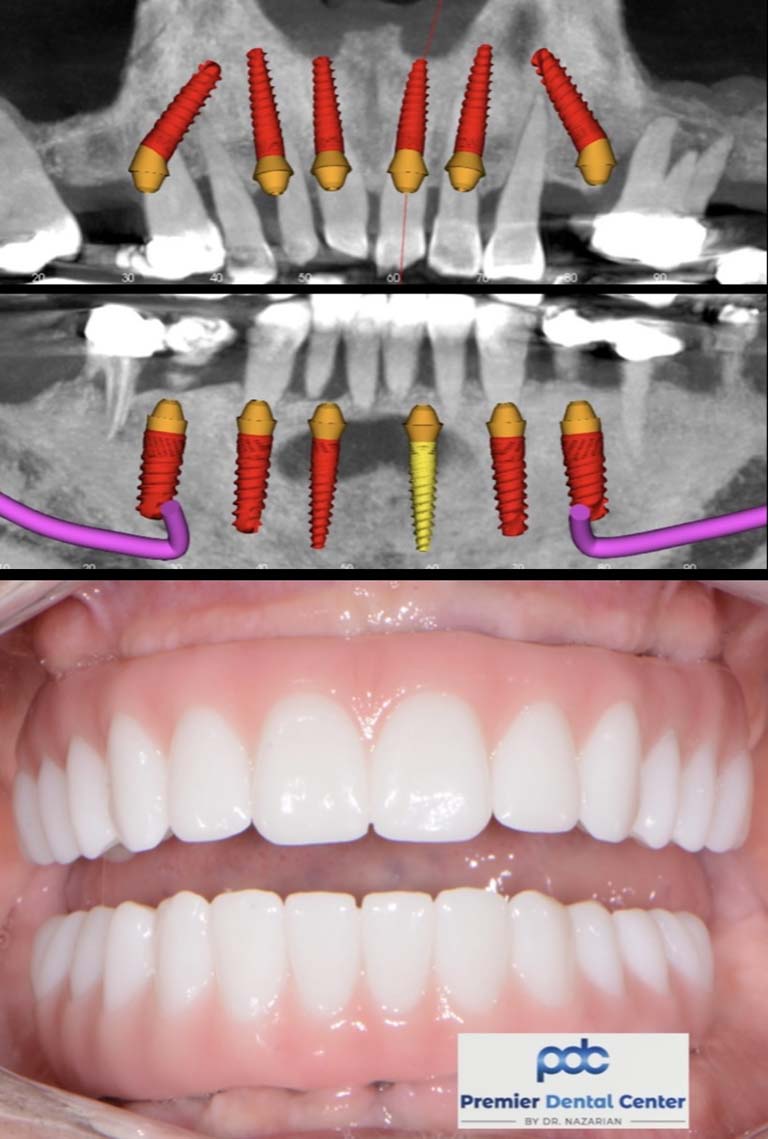Dental Sense Can Be Fun For Anyone
Dental Sense Can Be Fun For Anyone
Blog Article
The smart Trick of Dental Sense That Nobody is Discussing
Table of ContentsHow Dental Sense can Save You Time, Stress, and Money.An Unbiased View of Dental Sense9 Simple Techniques For Dental SenseSee This Report on Dental Sense
are clinical gadgets surgically implanted into the jaw to restore an individual's capability to chew or their look. They supply support for synthetic (phony) teeth, such as crowns, bridges, or dentures. When a tooth is shed because of injury or disease, an individual can experience issues such as fast bone loss, defective speech, or modifications to chewing patterns that cause pain.Oral dental implant systems consist of a dental implant body and dental implant joint and may also include an abutment fixation screw. Dental implants. The dental implant body is operatively inserted in the jawbone instead of the tooth's origin. The oral implant abutment is generally connected to the dental implant body by the abutment addiction screw and extends via gum tissues right into the mouth to sustain the affixed fabricated teeth
(https://hubpages.com/@dentalsense1)Framework of The Dental Implant System picking oral implants, speak with your dental copyright concerning the possible advantages and risks, and whether you are a prospect for the procedure. Points to take into consideration: Your total health is an essential element in identifying whether you are a good candidate for oral implants, the length of time it will certainly require to recover, and how much time the dental implant may remain in area.
Cigarette smoking may influence the recovery procedure and lower the long-term success of the implant. The recovery procedure for the dental implant body may take a number of months or longer, during which time you generally have a short-lived joint instead of the tooth. the oral implant treatment: Carefully follow the oral hygiene instructions offered to you by your dental copyright.
Dental Sense for Beginners
Implant failing can lead to the demand for an additional operation to fix or replace the implant system. Brings back the capacity to chew Recovers aesthetic look Aids keep the jawbone from diminishing as a result of bone loss Maintains the health of the bordering bone and gums Helps keep adjacent (close-by) teeth steady Boosts quality of life Damages to surrounding natural teeth throughout implant placement Injury to the surrounding cells throughout surgical procedure, such as sinus opening Injury throughout surgical treatment (as an example, fracture of bordering jawbone) Poor function, such as really feeling like the teeth do not attack with each other generally A feeling that the tooth is loose or turning in position arising from a joint screw loosening Implant body failing (looseness of the dental implant body) because of systemic infection, which might be more probable in patients with unrestrained diabetes mellitus because of local infection in bone and periodontals sustaining the implant body due to delayed healing, which may be more most likely in clients that smoke Problem cleaning the gum tissues around the implant, leading to inadequate oral hygiene Without treatment periodontal disease Post-surgical pins and needles as a result of nerve impingement or damage Constantly inform health treatment service providers and imaging specialists that you have oral implants prior to any magnetic vibration imaging (MRI) or x-ray treatments.
FDA is not familiar with any negative events reported for MRI or x-ray treatments with oral implants. Oral implants systems are normally made of products that adhere to international agreement standards of the International Company for Standardization (ISO) or ASTM International. These requirements have information of what makes a secure product.

A dental implant is a structure that changes a missing tooth. With screw-like tools, the doctor inserts a dental implant into the jawbone, and it serves as a support for an artificial tooth, called a crown. A gadget called an abutment connects the synthetic tooth to the dental implant. The crown is custom-made to fit the person's mouth and match the shade of their teeth.
Top Guidelines Of Dental Sense
Some people are not eligible for oral implant surgical procedure. It is for oral doctors to operate people with: acute illnessuncontrollable metabolic diseasebone or soft cells illness or infectionIf these concerns are solved, a person can have the surgery. In, oral specialists refrain from running on individuals with: If people with any one of the above go through dental implant surgical procedure, there is a greater risk of the dental implant stopping working.

Oral dental implant surgery is an individualized process. It's not the very same for every person. The adhering to gives a general overview of what you can expect your dental professional, oral cosmetic surgeon, periodontist or prosthodontist to do: Position the implant operatively. Give you time to heal. Attach the message and final crown, bridge or denture.
Next off, your doctor will carefully position the oral implant right into your jaw. Lastly, your specialist will reposition your gum tissues and shut the cut with stitches. If your implant is near the front of your mouth, your dental professional will make a short-lived tooth for you to use up until you recover. In this way, you won't have a void in your smile while you recoup.
The Facts About Dental Sense Revealed
Throughout the healing stage, your jawbone needs to fuse to the dental implant. This process can take anywhere from 3 to nine months.
Once your dental implant heals, your dentist can attach the joint (little adapter post) and your final repair (crown, bridge or denture). This generally takes about one hour to complete and might call for a 2nd minor surgical procedure. You shouldn't feel any type of discomfort during your dental implant procedure due to the fact that your service provider will utilize medicine to numb your gum tissues.
Report this page